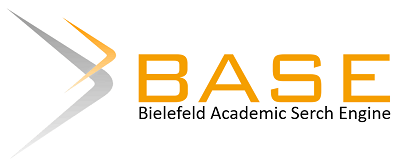Identifikasi Senyawa Flavonoid dari Kulit Batang Tanaman Rambai Padi (Sonneratia alba) dan Uji Aktivitasnya sebagai Antibakteri Staphylococcus aureus
Identification of Flavonoid Compounds from Stem Bark Sonneratia alba and its Antibacterial Activities against Staphylococcus aureus
DOI:
https://doi.org/10.36873/jjms.v1i2.217Keywords:
flavonoid, antibakteri, Staphylococcus aureus, Sonneratia alba, rambai padiAbstract
Penelitian ini bertujuan untuk mengetahui (1) bioaktivitas ekstrak metanol-air kulit batang tanaman rambai padi (Sonneratia alba) terhadap Staphylococcus aureus (2) konsentrasi minimal ekstrak kulit batang S. alba yang mampu menghambat dan membunuh 100% Staphylococcus aureus dan (3) jenis senyawa aktif yang terdapat pada kulit batang S. alba. Dari uji aktivitas antibakteri menggunakan metode dilusi menunjukkan bahwa ekstrak metanol:air kulit batang S. alba memiliki kemampuan dalam menghambat dan membunuh bakteri Staphylococcus aureus. Konsentrasi hambat minimum (KHM) dan konsentrasi bunuh minimum (KBM) yang diperoleh yakni 0,050 dan 0,075 % untuk ekstrak metanol:air (9:1) dan 0,50 dan 0,75% untuk ekstrak metanol:air (5:5). Hasil bioautografi dan interpretasi data UV-Vis menunjukkan bahwa terdapat 5 (lima) senyawa aktif yang berperan sebagai antibakteri pada ekstrak kulit batang S. alba yaitu 3 (tiga) senyawa flavonoid yang terdiri dari jenis flavan (katekin) dan flavonol dengan 3-OH bebas dan 2 unknown senyawa fenolik.
Downloads
References
J. B. Harborne and C. A. Williams, “Advances in Flavonoid research since 1992,” Phytochemistry, vol. 55, no. 6, pp. 481–504, 2000.
F. Farhadi, B. Khameneh, M. Iranshahi, and M. Iranshahy, “Antibacterial activity of flavonoids and their structure – activity relationship?: An update review,” Phyther. Res., vol. 33, no. 1, pp. 13–40, 2019.
N. Rahmania, Herpandi, and Rozirwan, “Phytochemical Test of Mangrove Avicennia alba, Rhizophora apiculata and Sonneratia alba from Musi River Estuary, South Sumatera,” Biovalentia Biol. Res. J., vol. 4, no. 2, pp. 1–8, 2018.
I. M. Gould, “International Journal of Antimicrobial Agents The epidemiology of antibiotic resistance,” pp. 2–9, 2008.
G. M. Rossolini and E. Mantengoli, “Antimicrobial resistance in Europe and its potential impact on empirical therapy,” vol. 14, pp. 2–8, 2008.
M. Akova, “Epidemiology of antimicrobial resistance in bloodstream infections,” Virulence, vol. 7, no. 3, pp. 252–266, 2016.
G. H. Chapman, “The Significance of Sodium Chloride in Studies Staphylococci,” J. Bacteriol., vol. 50, no. 2, pp. 201–203, 1945.
E. Jawetz, J. L. Melnick, and E. A. Adelberg, Medical Microbiology, Twenty-Six. The McGraw-Hill Companies, Inc, 2013.
T. J. Mabry, K. R. Markham, and M. B. Thomas, “Reagents and Procedures for the Ultraviolet Spectral Analysis of Flavonoids,” in The Systematics Identification of Flavonoid, Springer Berlin Heidelberg, 1970, pp. 35–40.
T. J. Mabry, K. R. Markham, and M. B. Thomas, The Systematic Identification of Flavonoids. Berlin: Springer Berlin Heidelberg, 1970.
T. Atomssa and A. V. Gholap, “Characterization and determination of catechins in green tea leaves using UV-visible spectrometer,” J. Eng. Technol. Res., vol. 7, no. 1, pp. 22–31, 2015.
K. en. R. Markham and T. O. M. Mabry, “Ultraviolet-Visible and Proton Magnetic Resonance Spectroscopy of Flavonoids,” in The Flavonoids, J. B. Harbone, T. J. Mabry, and H. Mabry, Eds. Springer Boston MA, 1975, pp. 45–77.
M. Iinuma, M. Ohyama, T. Tanaka, M. Mizuni, and S. Hong, “Three 2’,4’,6’-Trioxygenated Flavonones in Roots of Echinosophora Koreensis,” Phytochemistry, vol. 31, no. 2, pp. 665–669, 1992.
K.-H. A. Rosler, D. P. C. Wong, and T. J. Mabry, “Problems With Ultraviolet Spectroscopy of Flavonoids using Sodium Acetate in Methanol,” J. Nat. Prod., vol. 48, no. 5, pp. 837–840, 1985.
T. P. T. Cushnie and A. J. Lamb, “Recent advances in understanding the antibacterial properties of flavonoids,” Int. J. Antimicrob. Agents, vol. 38, pp. 99–107, 2011.
L. E. Alcaraz, S. E. Blanco, O. N. Puig, F. Tomas, and F. H. Ferretti, “Antibacterial Activity of Flavonoids Against Methicillin-resistant Staphylococcus aureus strains,” J. theor. Biol., vol. 205, pp. 231–240, 2000.
Q. Kanwal, I. Hussain, H. L. Siddiqui, and A. Javaid, “Flavonoids from mango leaves with antibacterial activity,” J. Serb. Chem. Soc., vol. 74, no. 12, pp. 1389–1399, 2009.
B. Özçelik, D. D. Orhan, S. Özgen, and F. Ergun, “Antimicrobial Activity of Flavonoids against Extended-Spectrum ? -Lactamase ( ES ? L ) -Producing Klebsiella pneumonia,” Trop. J. Pharm. Res., vol. 7, no. December, pp. 1151–1157, 2008.
D. Treutter, “Significance of flavonoids in plant resistance?: a review,” Environ. Chem. Lett., pp. 147–157, 2006.
E. Haslam, “Natural Polyphenols ( Vegetable Tannins ) as Drugs?: Possible Modes of Action,” J. Nat. Prod., vol. 59, no. 2, pp. 205–215, 1996.
A. Scalbert, “Antimicrobial Properties,” Phytochemistry, vol. 30, no. 12, pp. 3875–3883, 1991.
I. M. O. A. Parwata and P. F. S. Dewi, “Isolasi dan uji aktivitas antibakteri minyak atsiri dari rimpang lengkuas (lpinia galanga L.),” J. Kim., vol. 2, no. 2, pp. 100–104, 2008.

















